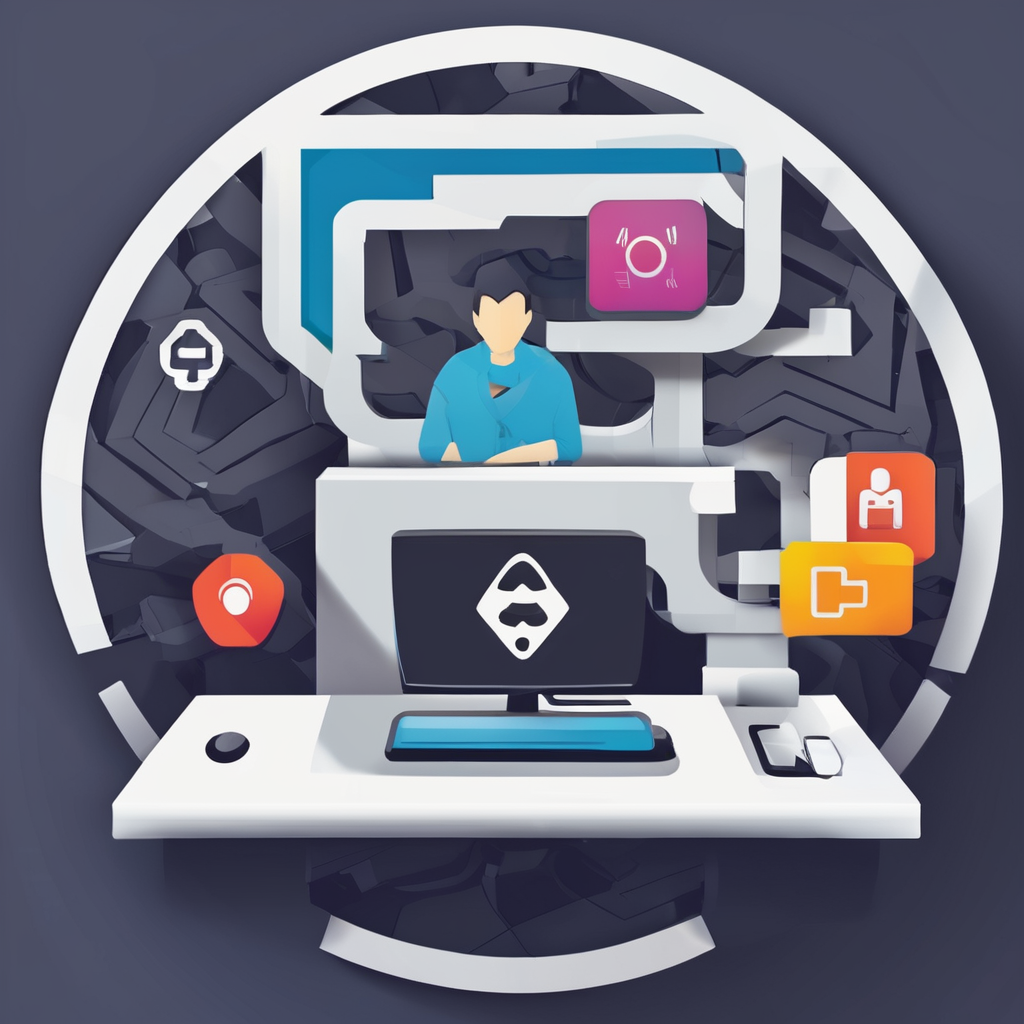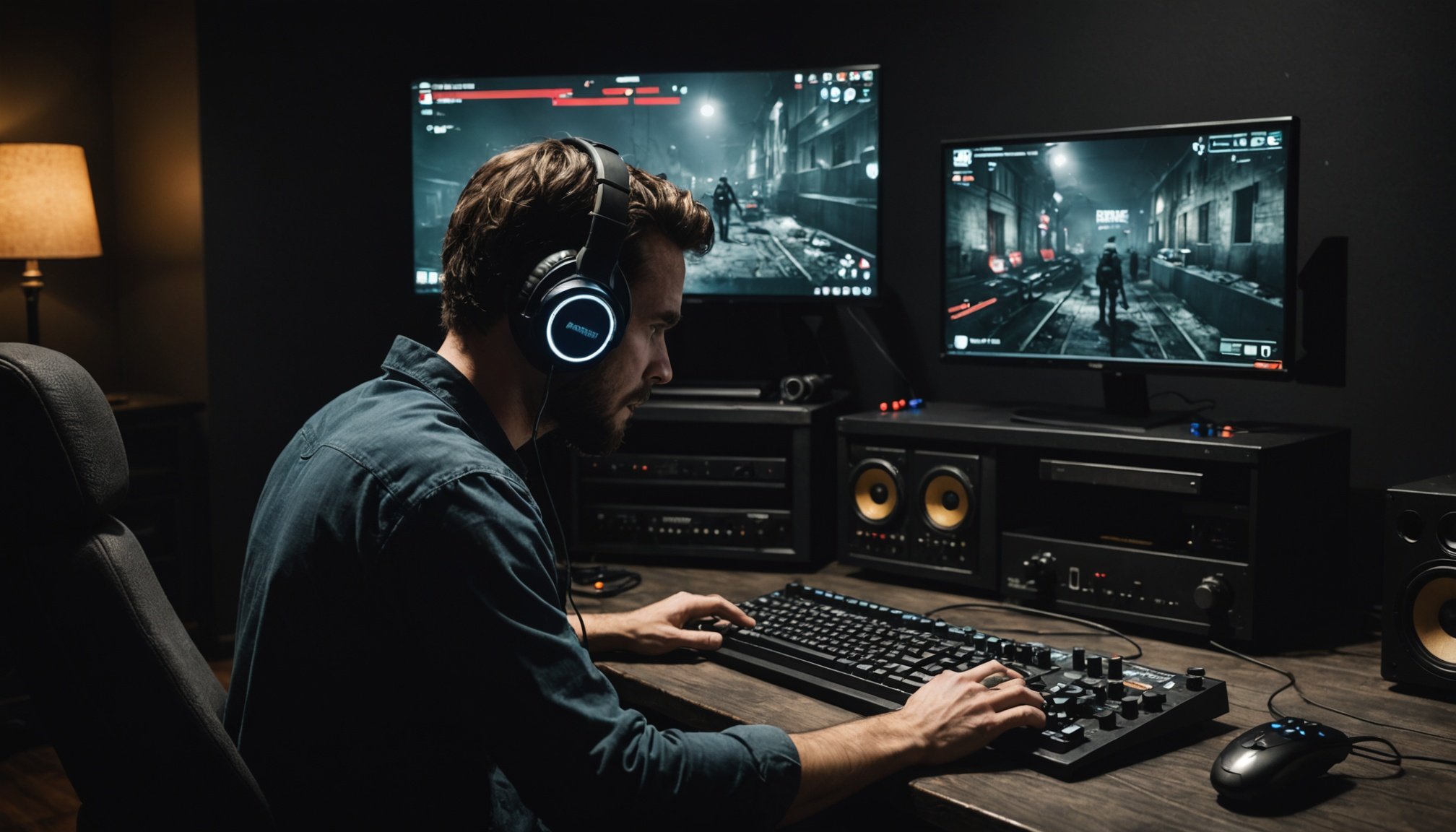Understanding Dynamic Audio Innovations in Horror Gaming
Dynamic audio has revolutionised how horror gaming is experienced, crafting a hauntingly immersive environment that heightens the thrill factor. At the heart of this innovation is the utilisation of technologies that respond to player interactions, providing audio that shifts and adapts in real time. This responsiveness creates a personalised immersive experience, making each player’s journey through the game uniquely terrifying.
The importance of sound in horror gaming cannot be overstated. It goes beyond mere accompaniment and becomes a core component of storytelling. By integrating dynamic audio, developers can manipulate sound effects, music, and ambient noise to enhance gameplay and emotional impact. This means that sudden crescendos or eerie silences can be timed precisely with on-screen events to maximise player engagement and emotional responses.
Also to see : Transforming escape room adventures: leveraging ai for real-time puzzle challenge customization
Audio innovations, especially in horror games, are designed to tap into primal fears through unsettling sounds and sudden auditory cues. This strategic use of dynamic audio challenges players’ perceptions and senses, often catching them off-guard. It’s no wonder that successful games in this genre rely heavily on these audio techniques. By continuously evolving, dynamic audio keeps pushing the boundaries of how horror is perceived in the gaming world.
Key Audio Technologies Used in Horror Gaming
In the world of horror gaming, audio technology plays a crucial role in crafting an immersive experience. Effective sound design can make the difference between a spine-tingling game and a lackluster one.
Also to discover : Bringing nature to life: essential techniques for developers to enrich vegetation in open-world adventure games
3D Spatial Sound
3D spatial audio is one technology that significantly enhances player immersion. By accurately simulating sound placement, players can perceive noises coming from specific directions, which is crucial in horror games where knowing an enemy’s whereabouts can be life-saving. This is achieved through advanced sound algorithms, allowing sounds to be positioned in a 360-degree sphere around the player.
Procedural Audio Systems
Procedural audio systems dynamically generate sounds in real-time, adding a unique layer of unpredictability to horror games. Unlike pre-recorded audio, procedural sound adapts to in-game events and player actions, creating a personalized auditory experience every time. This technology plays a pivotal role by providing variability, thereby maintaining the tension and suspense.
Binaural Audio Techniques
Binaural audio techniques are particularly effective in enhancing the realism of horror atmospheres. By mimicking how humans naturally hear, these techniques create immersive 3D soundscapes that fully immerse players in the game’s world. Binaural recordings, often made using microphones placed inside a dummy head, replicate the experience of hearing sounds naturally, heightening the emotional impact of terrifying moments.
Case Studies of Success in Audio Design
When dissecting successful case studies in audio design implementation in horror games, it becomes evident how audio plays a pivotal role in enhancing both narrative and gameplay. One standout is “Silent Hill 2,” where the chilling audio design immerses players into its unsettling world. The game leverages ambient sounds, including eerie whispers and distant screams, to produce an atmosphere filled with suspense and unease.
Furthermore, “Resident Evil 7” exemplifies how sound can influence the narrative fundamentally. Players often report the sensation of fear deepening through its use of creaking floors and spine-tingling silence punctured by sudden noises. This carefully crafted audio palette guides player emotions, creating an experience rooted in tension and anticipation.
Player reactions to these audio design implementations have been overwhelmingly affirmative. Many highlight how these elements contribute to unpredictable gameplay, increasing both fear and excitement. For instance, the clever use of sound to signal impending danger without any visual cues leaves players on edge. This effect is profound as it suggests horror beyond what is seen, with audio effectiveness becoming a significant part of the terror.
Overall, these horror games highlight the audio design’s power to significantly elevate player experiences, demonstrating its critical role in compelling gameplay narratives.
Impact of Audio on Player Experience
In the realm of gaming, sound design plays a pivotal role in shaping the player experience. The correlation between carefully crafted audio and heightened player emotional engagement is evident, particularly in horror games. Players report increased horror intensity when sound design effectively taps into primal fears – whether it’s a subtle creak of a floorboard or the crescendo of an unsettling score.
Empirical studies highlight audio’s capacity to bolster game immersion. For instance, soundtracks that adapt dynamically to player actions can significantly enhance the feeling of presence within a game world. This heightened immersion not only intensifies emotional responses but can also affect player concentration and performance.
Several case studies further illustrate the profound impact of audio. Player feedback often underscores the importance of audio-driven experiences in creating memorable and visceral moments. For example, in horror games, sound can evoke a fear response before the visual element appears, leveraging suspense and surprise, central to horror intensity.
Moreover, audio’s role extends beyond fear-inducing games. Across genres, whether adventure or fantasy, the soundscape contributes to narrative depth and player engagement. Therefore, understanding and optimising audio design is crucial for developers aiming to craft compelling and emotionally resonant player experiences.
Practical Tips for Integrating Dynamic Audio
Introducing dynamic audio into your game development process can significantly enhance player experience, but effective audio integration requires careful planning and execution.
Choosing the Right Tools and Technologies
Selecting the correct tools is paramount. Tools like FMOD and Wwise offer robust platforms for audio implementation. These enable developers to incorporate complex audio behaviours seamlessly. Unity and Unreal Engine also have native solutions that cater to different game development needs.
Collaborating with Audio Designers
A successful audio experience heavily relies on collaboration. Developers should engage with audio professionals early in the development process. This ensures the creative vision aligns with the technical possibilities, allowing for superior audio integration. Regular meetings and open communication create an environment for innovative solutions.
Iterative Testing and Feedback Loops
Continuous testing is essential to refine audio quality. Implementing systematic feedback loops allows teams to identify improvement areas swiftly. Engaging with players or external testers can provide insightful perspectives, ensuring that the audio implementation resonates well with the target audience.
- Utilise tools like Reaper for sound editing.
- Solicit input from audio designers frequently.
By focusing on these key areas, developers can harness the power of dynamic audio, elevating their game development projects to new heights.










